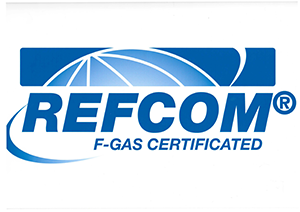An air conditioning system functions with many different parts and components, all working to heat or cool the air within your home or business. Air conditioner refrigerant is at the centre of this as it is essential to the temperature change.
What is an air conditioning refrigerant?
An air conditioning refrigerant is a component used in air conditioning systems and refrigeration equipment to absorb heat from the air inside a building or a space and release it outside. It undergoes a cycle of compression and expansion, changing from a gas to a liquid and back again, to encourage the transfer of heat.
How does an air conditioning refrigerant work?
An air-conditioning refrigerant works through a process called the refrigeration cycle, which involves four main components:
Compression:Starting as a low-pressure gas in the evaporator coil, the compressor, located outside, compresses this gas, increasing its temperature and pressure.
Condensation:The hot, high-pressure gas moves to the condenser coil outside the building where it releases heat to the outside air and condenses into a high-pressure liquid.
Expansion:The high-pressure liquid refrigerant passes through an expansion valve or metering device, where its pressure and temperature drop rapidly. This causes the refrigerant to expand into a low-pressure mixture of liquid and gas.
Evaporation:As air from space travels over the coil, the refrigerant absorbs heat from the air, causing it to evaporate into a low-pressure gas once more.
Return to compression:The low-pressure gas returns to the compressor, and the cycle repeats.

How to refill air conditioning refrigerant
Refilling an air conditioning system with refrigerant should be done by a certified HVAC technician due to the specialised equipment and potential hazards involved. There may also be different techniques used for different unit types and brands.
Here is a simple guide for refilling an air conditioning refrigerant:
- Identify the refrigerant type and the model of the unit
- Locate service ports
- Check the system pressure
- Prepare the refrigerant and gather all you need
- Connect a charging hose
- Charge the system
- Monitor the system operation
- Check for any leaks
- Dispose of unused refrigerant
It’s important to note that adding refrigerant to an air conditioning system is not a permanent solution to cooling issues. If your system requires frequent recharging, it likely has a leak that needs to be repaired by a professional technician. Additionally, adding too much or too little refrigerant can cause damage to the system, so it’s best to leave this task to trained professionals. The best way to tackle these problems is by having a maintenance plan in place, we also provide air conditioning repairs where needed.



